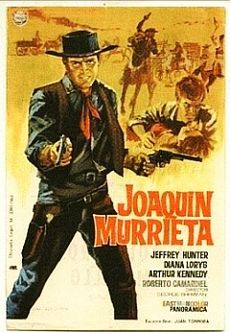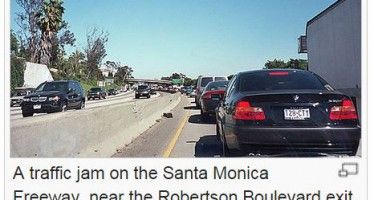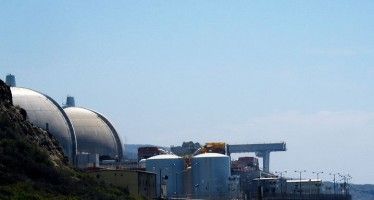Feinstein’s ‘Bandit River’ project brings back redevelopment
By Wayne Lusvardi
The San Joaquin River wasn’t named after Joaquin Murrieta, the infamous bandit of the 1850’s Gold Rush in California. But it might as well have been called “Bandit River” after U.S. Senator Dianne Feinstein’s long pursuit to restore the San Joaquin River. The initial action to restore the river was brought by a lawsuit by the National Resources Defense Council in 1994 and adjudicated in 2006.
The $1.081 billion project is an agricultural land and water grab that plants government funded “green jobs farms” in the middle of the agriculture rich Central Valley of California. Funding for the project came from U.S. Senator Dianne Feinstein’s H.R. 146 — the San Joaquin River Restoration Act of 2009. Approval for this funding only came when Democrats had one-party rule in both houses of Congress and the Presidency. But even then the funding could only be approved as a trailer bill to the Omnibus Lands Act of 2009 due to the bipartisan opposition of the farm lobby.
The San Joaquin River Restoration Act is a project of the U.S. Bureau of Reclamation that will re-wet a 60-mile reach of the riverbed that runs dry, especially in hotter seasons and dry years. According to Wikipedia.com, during the winter, spring and early summer months rainfall and snowmelt swell the river. But during the late summer and autumn a portion of the river dries up. Dams and irrigation diversions after 1914 contributed to drying up the river during dry seasons and years.
The long awaited approval of the river restoration project has been heralded by a wide array of green organizations. The Golden Gate Audobon Society sees it as a win for “birders.” No mention was made of the 6,642-acre San Joaquin River National Wildlife Refuge, which is a part of three wildlife refuges totaling 48,825-acres or 76-square miles.
The “Revive the San Joaquin” organization touts 11,000 new jobs from the project. The National Resources Defense Council called it a “new era” of “jobs creation,” “improving water supply and flood management,” and a “living river” for a more vibrant San Joaquin Valley.
The Fresno Bee called it a “win for farmers and salmon.” But that headline appears to be highly dubious. It is more like a one-sided win for politicians and environmentalists at the cost of farmers and the public purse.
More Permanent Jobs Lost Than Gained
The reality is very much different than portrayed by politicians, green organizations dependent on the Federal dole, and environmental legal advocacy organizations. The river restoration project:
* Will likely take away many more private sector jobs than are gained;
* Will require enlarging levees to reduce the threat of farmland flooding; and,
* Will take water from farmers with no plan to “restore” the water taken by conservation measures or new water resource development.
Moreover, 90 percent of the jobs created will be short-lived construction jobs. Another 6 percent will be long-term fish monitoring jobs for non-profit organizations that will be dependent on grants and “green welfare” for their long-term support.
Mike Wade of the Farm Water Coalition stated in an email that river restoration would come at a loss of 3,000 agricultural jobs. And it could take 50,000 to 70,000 acres of cropland out of production for new riverbed and levee expansion.
Private Sector Permanent Jobs Gained & Lost
|
Jobs Gained |
Jobs Lost |
Percent Jobs Gained |
|
|
PERMANENT JOBS |
|||
|
Tourist commercial jobs (real estate, tourist retail, etc.) |
475
|
4% |
|
|
Non-profit environmental monitoring jobs |
635 |
6% |
|
|
Agriculture |
3,000 |
||
|
TEMPORARY JOBS |
|||
|
Construction |
10,282 |
90% |
|
Democratic politicians are demanding a cost-benefit study of the proposed Peripheral Canal Tunnels through the Sacramento Delta. But no such cost-benefit study has been conducted of the San Joaquin River Restoration Project.
The major study being touted by project proponents is a one-sided study of only economic benefits by the University of California at Merced (“The Economic Benefits of the San Joaquin River Restoration Project” – no link provided online but study can be found at the website for the Fresno Regional Foundation).
The nearly 11,000 new jobs estimated by the U.C. Merced study as a result of the project ignore 3,000 agricultural jobs lost. The study downplays that 96 percent of the jobs created by the project will be temporary construction jobs or long-term environmental monitoring jobs that would be dependent on government stipends or grants.
The 475 private sector jobs estimated to be created by 2025 reflects only 4 percent of all hypothetical jobs. This estimate is based on other studies of the number of jobs generated by public water recreation projects.
But as Mike Wade of the Farm Water Coalition points out, the San Joaquin River corridor is mainly comprised of farmland with no commercial access easements to the river. How an estimated 3,696 “induced (indirect) jobs” for real estate, retail sales, motel worker, and sports fishing jobs would materialize seems more conjecture without the accompanying re-zoning of land to commercial uses.
As Wade expressed it in an email:
‘The (U.C. Merced) report said that there would be enhanced recreational opportunities as a result of the river’s restoration. I questioned how extensive those would be since there is already a considerable amount of recreation on the upper reaches of the river. As far as the lower reaches, because most of the river abuts private property there would be little, if any, new recreation created in and around communities like Mendota and Dos Palos.”
As far as urban encroachment on farmland, Wade stated:
“The biggest concerns over encroachment right now are the effects of seepage under private property from the river. We are hopeful that mitigation efforts that are required as part of the project would eliminate those effects but as for now we are unsure how effective they will be. Commodity prices are high enough now that farmers in the area are more interested in being able to farm than they are worried about urban encroachment. The area is far enough off the beaten path that this likelihood is pretty remote for the time being anyway.”
Project Will Kill Trout in San Joaquin River
Fishing guide Louis Mossios says that, as a result of the project, 18,000 trout anglers per year will end up having to go to the Kings River instead.
The reason pointed out by Mossios is the State Water Code grants exclusive rights to salmon in California rivers as provided in Chapter 21, Section 3.3 of the California Fish and Game Code:
“Domesticated or non-native fish species will not be developed or maintained, in drainages of salmon waters, where…they may adversely affect native salmon populations by competing with, preying upon, or hydridizing with them.”
The project’s proponents have apparently kept low key that it would result in eradication of trout in the San Joaquin River. Currently, the San Joaquin Fish Hatchery plants about 750,000 catchable trout annually. The mitigation plan for the project includes the cost of relocating trout to the Kings River.
Project Benefits Mainly Special Interests
The San Joaquin River Restoration Project has almost totally benefited environmental interests at the expense of agricultural interests in California’s Central Valley.
To answer the question how the public interest has been benefitted, a comparison has been made of the jobs generated from the San Joaquin River Restoration Project and Disneyland when it was first built in 1955.
Disneyland cost about $117 million in today’s dollars when it was built in 1955. It generated 2,190 permanent jobs and 5,000 construction jobs at that time. That equates to $53,425 per permanent job and $23,400 per temporary job created.
By comparison, the San Joaquin River Restoration will cost about ten times as much as Disneyland, but will generate only 475 permanent private commercial jobs at a cost of $2,275,789 per job. Temporary construction jobs will cost about five times more per job for the river restoration than would rebuilding the original Disneyland in today’s dollars. Make work jobs for “physical and biological (fish) monitoring” of the river restoration will alone cost $40,950,000.
SJ River Restoration & Disneyland Jobs/Costs Compared
| Original Cost in Today’s Dollars | Permanent Employees | Temporary Employees | Cost Per Temporary
Job |
Cost Per Permanent Job | |
| Disneyland | $117 million | 2,190
(1956) |
5,000
(1956) |
$23,400 | $53,425 |
| San Joaquin River Restoration | $1.081
billion |
475
(by 2025) |
11,000 | $98,273 | $2,275,789 |
The project will provide economic relief to an area “suffering chronic unemployment.” But it would equate to a stimulus of $13,975 for every household in Merced County.
The state portion of the funding for the project will come from Proposition 84, the Safe Drinking Water, Water Quality and Supply, Flood Control, River and Coastal protection Bond Act of 2006; and Proposition 1E, the Disaster Preparedness and Flood Protection Bond Act of 2006. Both are general obligation bonds paid by statewide taxpayers. What water bonds have become in California under the Democratic-controlled Legislature is a slush fund for local redevelopment projects dressed up an environmental restoration and park greenscaping projects.
What did Feinstein’s River Restoration Buy?
Feinstein’s bill mainly buys a local and regional redevelopment project for the Merced County area. It takes jobs, land and water from farmers and gives it to construction workers, scientists, and environmental consultants with a pittance of hypothetical jobs generated to the private economy. It takes blue-collar farm jobs and gives them to blue-collar construction workers in the short term and white-collar technocrats in the long term.
Any gain in salmon runs and commercial fishing will be offset by the cost to expand trout fishing in the Kings River. The San Joaquin River Restoration project is not an environmental project per se. It is mainly a rural redevelopment project that will trade salmon for trout habitats.
Gov. Jerry Brown has recently refused to sign bills to replace redevelopment agencies in California. But redevelopment is alive and well along the banks of the San Joaquin River under the guise of river restoration projects funded with water bonds.
Related Articles
State peddles idea that bullet train contractors are investors
On Jan. 11, 2010, the Legislative Analyst’s Office issued a report on the latest iteration of the business plan for
Pension spikes crumbling CA roads
From roads to bridges and well beyond, California’s neglected infrastructure won’t receive relief this election cycle. For years, the state
NRC leaves lump of coal in San Onofre’s stocking
The Nuclear Regulatory Commission this week cited Southern California Edison for failing to check the design of steam generators





